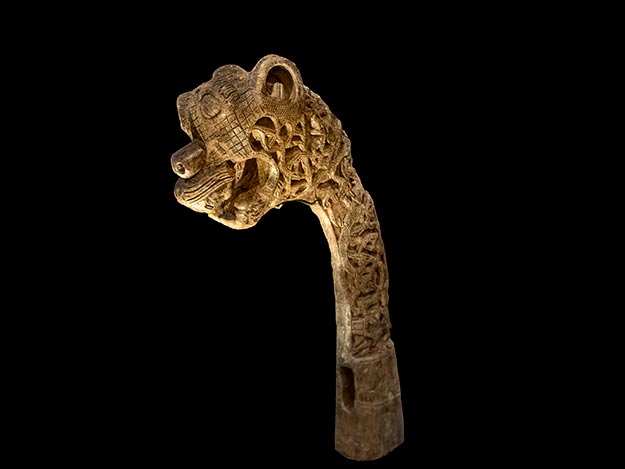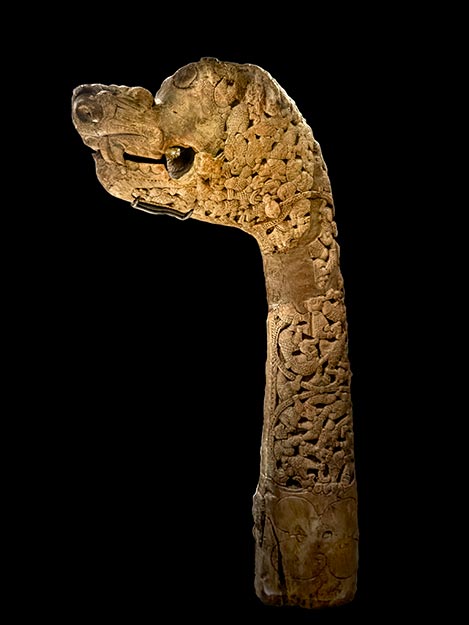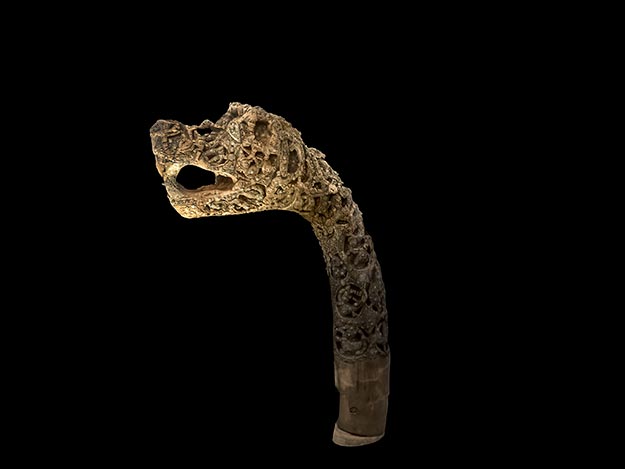If I had to choose one word to describe Viking civilization, it would be mystery. The popular TV series by the History Channel paints Vikings as bloodthirsty warriors. While it is true they sailed far and wide, discovering new lands and raiding settlements, they spent most of their time farming. Vikings didn’t wear horned helmets. They weren’t dirty, uncivilized cretins. Even the way we refer to them is incorrect. The word Viking hails from the ancient Norse word for a raid or trading trip. They often “went on a Viking,” but they did not refer to themselves as Vikings. It’s safe to say that most of what we think we know about Vikings is wrong.

According to Norse mythology, Vikings who died in battle sailed to Valhalla, an enormous celestial hall ruled over by the god Odin. To ensure a successful final voyage, eminent members of the society were buried in ships, surrounded by everything they might need in the afterlife. A pit deep enough to hold the ship was dug and the vessel was lowered into it. Dirt was mounded on top until the entire boat was covered. One of the most spectacular examples of such a burial is the Oseberg Grave Ship, which dates back to A.D. 834. Discovered and excavated in 1904, today it is displayed at the Viking Ship Museum in Oslo, Norway. But if I had expected the Oseberg to provide clarity, I was sorely disappointed. If anything, it deepened the mystery.

In addition to the bodies of two elderly women, the ship yielded a treasure trove of artifacts. Three beautifully carved wooden horse sleighs, a work cart, seven beds, iron rings and rattles, fifteen horses, two tents, six dogs, one throne chair, and a large number of tapestries were recovered. But the most stunning pieces were five wooden posts with intricately carved animal heads. Four of the five are about 20 inches long and the fifth is attached to an additional yard-long wooden shaft. They appear to have been made by different carvers. Two of them incorporate silver rivets into the the design. No one knows for sure what they were used for, and no other Viking excavation has yielded anything similar.

Some see the head of dogs in the posts, while others see horses. Experts speculate they could have been used as walking sticks or ceremonial staffs. The only thing that may provide a clue is that one of the posts was discovered with a rope through its mouth. The rope was attached to an iron ring, similar to those run through the noses of bulls. One theory is that these were “forecasting rings,” used to communicate with the gods.

But I have my own ideas. Viking women were held in high regard and took on a great deal of responsibility. They were literally the keeper of the keys to all structures on their farms. Keys were kept on big rings attached to their belts or carried in bags. My theory is that the carved posts found on the Oseberg Grave Ship were fancy key carriers used by two very influential and revered women found in the burial. We may never know the true function of these carved heads but one thing is certain. They are stunningly beautiful. And any culture that spent so much time and resources to create something of such beauty cannot possibly be solely focused on warfare.
Author’s note: I was a guest of Collette during my Spectacular Scandinavia tour. However, the receipt and acceptance of complimentary items or services will never influence the content, topics, or posts in this blog. I write the truth, the whole truth, and nothing but the truth.

This was an intoxicating read, Barbara. I loved your ‘take’ on this mystery!
LOL – some have criticized me for my opinions as to the use for these carved wooden sticks, but where would we be without imagination? Thanks for indulging me.
Thanks for this article, Miss. Barb. I will not know the history and I’ve visited that museum. Very informative.
You’re welcome Fe! Happy you found it interesting.